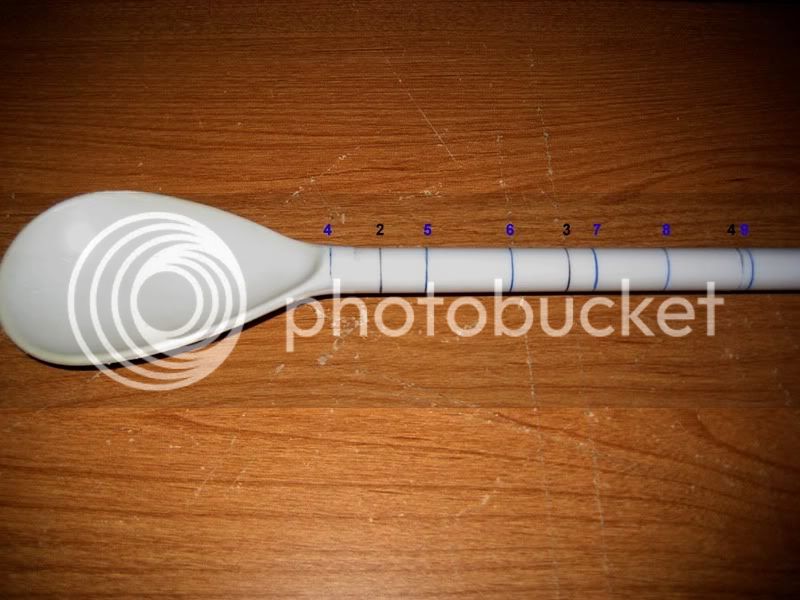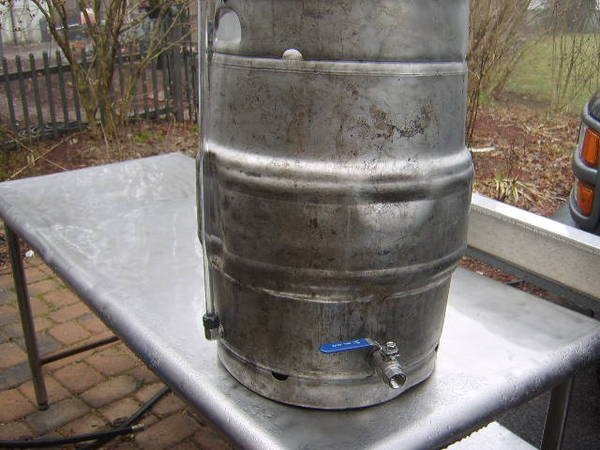
i used the spoon that came with my first beginners kit. i did exactly what Bombo80 talked about; marked the spoon with a sharpie for each gallon i added. after i had done 4-5 gallons on my 15 gallon kettle, i measured to find out that it was just over an inch per gallon, so i continued to mark off by measuring. the only reason i was able to do this is that my boil kettle has straight parallel sides. this wouldn't be as accurate on a keggle because of the way the sides bow. after i was done measuring i used a pipe cutter (the kind with a cutting wheel that you twist) to groove the marks. then i came back with the sharpie and colored in the grooves, making sure to get the ink all the way into the groove. next i sanded the stem of the spoon with 120 sandpaper to smooth out the bumps the pipe cutter left behind. i followed that up with 400 grit just to make it really smooth. the blue marks are for my 15 gallon kettle, and the black marks are for my 5 gallon. if i hadn't have had this spoon laying around i would have just used a piece of small diameter pvc pipe. if you're really fancy (but not fancy enough to make a sight glass) you could use a length of copper and notch it the same way, and tack that into the inside of the keggle.


























































![Craft A Brew - Safale BE-256 Yeast - Fermentis - Belgian Ale Dry Yeast - For Belgian & Strong Ales - Ingredients for Home Brewing - Beer Making Supplies - [3 Pack]](https://m.media-amazon.com/images/I/51bcKEwQmWL._SL500_.jpg)
 ... Me and BM have some ugly junk...
... Me and BM have some ugly junk...
